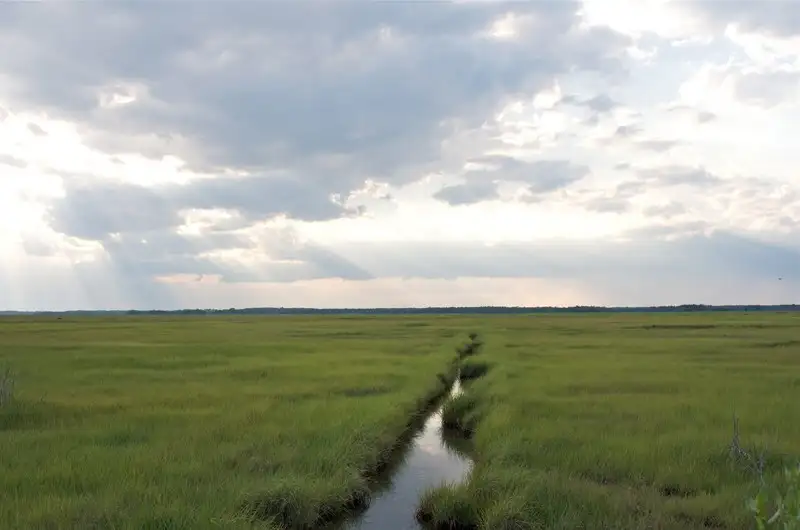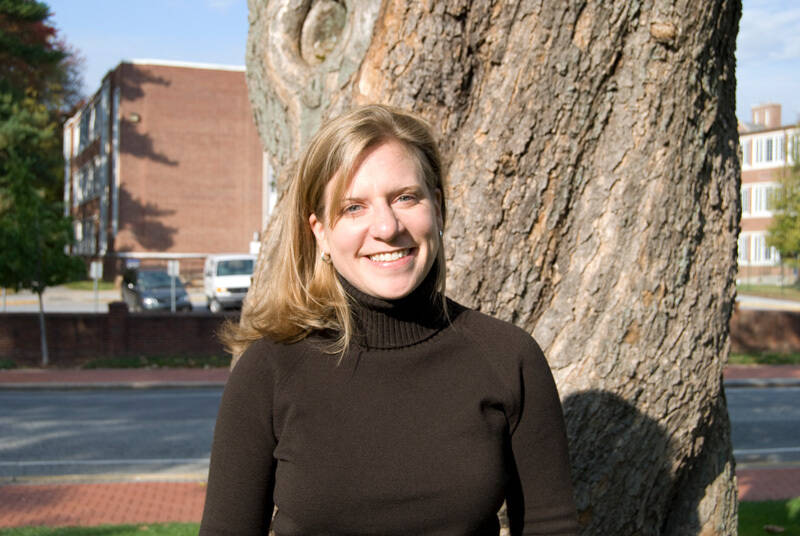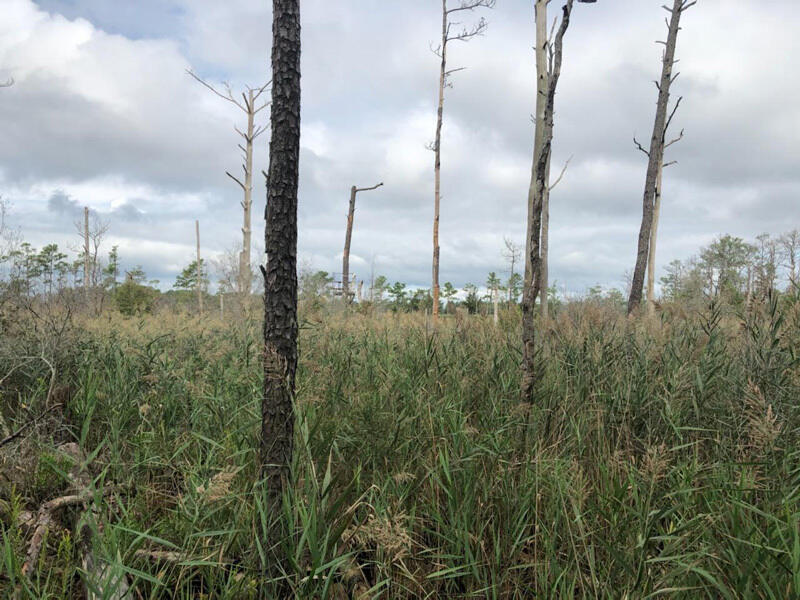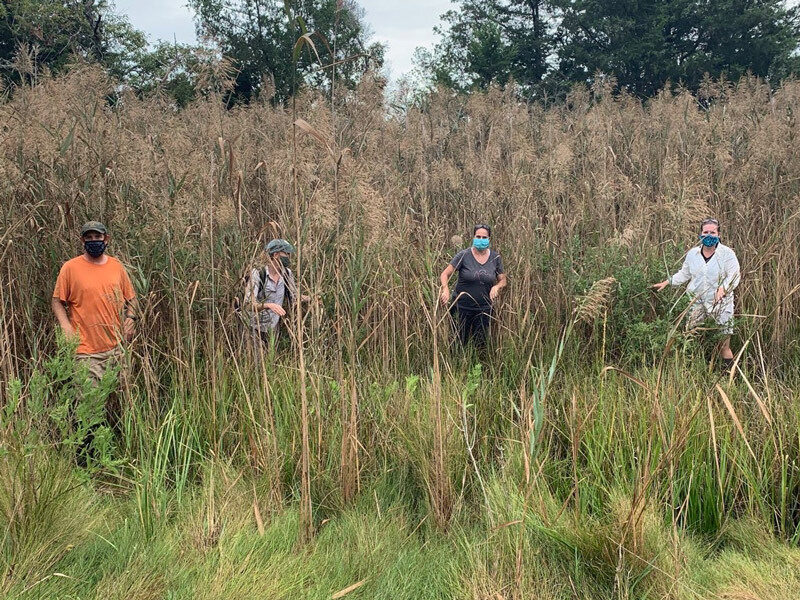
Article by Karen B. Roberts | Photos courtesy of Holly Michael and Lisa Tossey | October 01, 2020
UD’s Holly Michael leads multi-institutional research to understand the impact on critical coastal zones
Climate change and sea level rise are increasing the amount of saltwater that intrudes across coastal ecosystems, and scientists are anxious to understand how these systems are experiencing these changes in real time.
The most profound changes are taking place at the interface where plants, soil and water meet — in marshes, forests and on agricultural land — otherwise known as the coastal critical zone.
University of Delaware hydrogeologist Holly Michael is leading a multi-institutional team to better understand and predict these changes so that we can better manage coastal critical zones. The project is supported through a total $4.3 million in funding from the National Science Foundation (NSF) shared by six prominent institutions, $2.1 million of which is directed to UD. NSF’s Established Program to Stimulate Competitive Research (EPSCoR) program is co-funding the work.

Holly Michael is the Unidel Fraser Russell Career Development Chair in Environment and professor in UD’s departments of Earth Sciences and Civil and Environmental Engineering.
Michael, associate director for environmental initiatives in the Delaware Environmental Institute (DENIN), is the lead principal investigator and director on the project, which includes collaborators at University of Maryland, UD, George Washington University, Wesley College, Virginia Institute of Marine Science and Boston University. UD’s Angelia Seyfferth, associate professor of biogeochemistry and plant-soil interactions, and Yu-Ping Chin, biogeochemist and professor of civil and environmental engineering, are co-PI’s on the project.
The project is one of 10 NSF-funded projects recently announced as part of the agency’s Critical Zone Collaboration Network, which is infusing $10.5 million per year for five years in research funding to understand critical zones across Earth’s system. The UD-led project is the only thematic project selected that focuses on the coastal critical zone.
Michael, the Unidel Fraser Russell Career Development Chair in Environment and professor in UD’s departments of Earth Sciences and Civil and Environmental Engineering, recently answered questions about why research on this coastal critical zone is important globally, as well as locally in Delaware.
Q: Why is saltwater intrusion a problem?
Michael: In coastal areas, fresh water and seawater have a balancing act. Fresh water on land meets seawater in surface estuaries, and also underground. If ocean levels become higher, from storm surges or sea level rise, for example, seawater is pushed inland and fresh water becomes saltier. And also, if we lower water levels on land, by pumping groundwater, for example, there is less fresh water to balance the force of the saltwater, and so saltwater moves inland. Even a small push of seawater inland can cause big problems because even just 1% seawater makes fresh water undrinkable and can kill crops and other freshwater species.

Dead trees rising from coastal wetlands, also known as ghost forests, are an unwelcome consequence of too much saltwater intruding across coastal ecosystems.
Q: Why does this matter?
Michael: More than half of the humans on the planet live along coastlines. That means that not only are we using a lot of fresh water there and potentially causing seawater intrusion, when saltwater intrusion happens, it affects a lot of people. As sea level rises and warmer oceans create more hurricanes and other coastal storms, freshwater resources and ecosystems all along world coastlines could be in trouble.
Q: How is Delaware affected by saltwater intrusion?
Michael: In Delaware, we have important coastal ecosystems that rely on this balance between land and sea. We also have farms situated very close to the coastline. Because land in Delaware is low-lying, it doesn’t take much to upset the balance and cause ecosystem change. We are already seeing effects, such as the movement of salt marshes inland and the formation of ghost forests (dead trees rising from coastal wetlands), as well as damage to agricultural crops. Salt-marsh movement inland is not necessarily a bad thing, however, since they help protect the land behind them from flooding, and they also store a lot of carbon, which helps to slow climate change. We want to understand how these changes occur and what the implications are for our coastal system as a whole, so that we can best manage our important coastal resources for the future. We also plan to connect with farmers, other stakeholders and interested members of the public, through workshops and [Cooperative] Extension outreach to understand the real impacts they are observing.

Researchers on the NSF-funded coastal critical zone project scout a potential field site in Maryland. Pictured left to right are co-principal investigators and institutional leads Matt Kirwan, geomorphologist at Virginia Institute of Marine Science; Kate Tully, biogeochemist and agroecologist at University of Maryland; Keryn Gedan, coastal community ecologist at George Washington University; and Holly Michael, UD hydrogeologist and the project principal investigator leading the multi-institutional team’s overall effort.
Q: How will the new NSF funding help facilitate this work?
Michael: As part of the “Water in a Changing Coastal Environment” project that is part of Delaware’s Established Program to Stimulate Competitive Research (EPSCoR), we are monitoring farms and forests in Delaware to understand how salt is moving inland and how crop damage could be prevented. For example, Stephanie Stotts, an associate professor and program director of environmental studies at Wesley College, is using tree cores to understand how forests react to salt stress. The new NSF-funded Critical Zone project will extend this work in several ways. First, we have partnered with collaborators at Wesley College, the University of Maryland, George Washington University, Virginia Institute of Marine Science and Boston University to monitor forested and agricultural sites on all three sides of the Delmarva Peninsula — in Delaware, Maryland and Virginia. This is important because each state has different characteristics when it comes to exposure to coastal storms and land surface elevation. Collecting data on all three areas concurrently will help us understand better how different systems—and areas of Delmarva—respond.
Second, this study also will allow us to expand our efforts from looking primarily at salinity to understanding feedbacks, or connections, between hydrology (storm surges and water table rise), ecology (changes in marshes, forests and agricultural fields), geomorphology (land surface elevation), and geochemistry (changes in movement of carbon, nutrients and metals between land and sea). This allows us to look at the system along the marsh-forest and marsh-agriculture boundary much more closely and as an entire system to help us understand the multiple drivers that are working together to create the environmental changes that are being observed.
Q: This is an interdisciplinary effort. How will UD researchers be part of this work?
Michael: Yes, the UD work will involve collaboration across three colleges. I will be working on physical hydrology, while Angelia and Yu-Ping will be tackling biogeochemical processes and feedbacks. All of these efforts are supported by DENIN-affiliated educational specialists Jeanette Miller and Yolanda Williams-Bey and project manager Amy Slocum. Our collaborators at other institutions bring additional expertise in hydrology, biogeochemistry, geomorphology and ecology.
